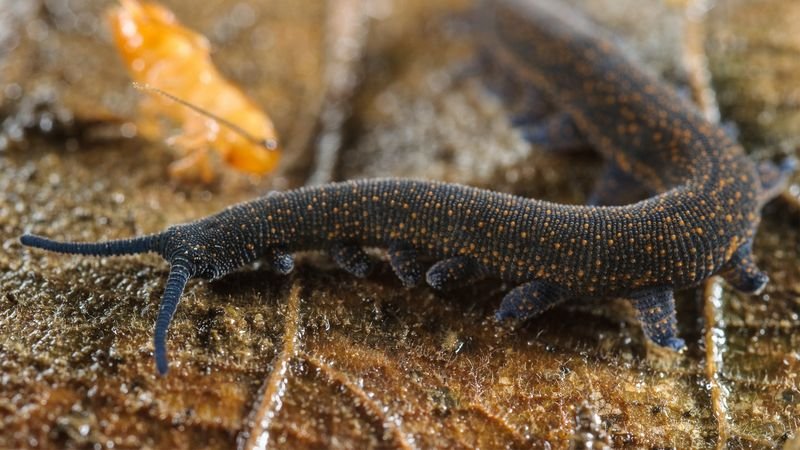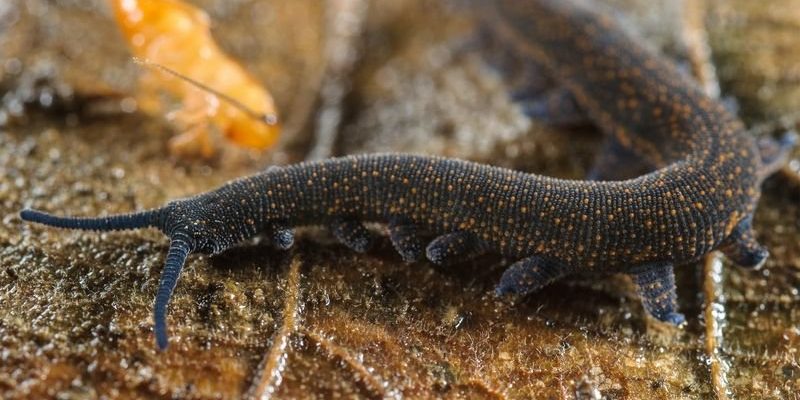
So, why does this oddly charming worm use slime? Well, their goo acts like a superhero’s shield, protecting them from danger while also helping them catch prey. Here’s the thing: these creatures aren’t just about looking cool; they’ve evolved a whole arsenal of strategies for survival. Let me explain how their slime works and why it’s so crucial for these little guys.
What Are Velvet Worms?
Velvet worms are pretty fascinating. With about 200 known species, they’re found in tropical and subtropical forests around the world. Their bodies are soft and covered in tiny hair-like structures, which give them that velvety appearance—hence the name! These worms can grow anywhere from a few centimeters to over 15 centimeters in length.
What sets them apart from regular worms is their unique blend of features. They have segmented bodies, like insects, but breathe through small openings in their skin. Plus, they have lobopod limbs, which means they can move around in a surprisingly delightful, caterpillar-like way. Picture a tiny, adorable creature that seems to glide across the forest floor; that’s your velvet worm!
How Velvet Worms Produce Slime
Now that we know what these critters are, let’s talk about their special skill: slime production. Velvet worms have special glands located in their heads that produce a sticky, mucus-like fluid. When they feel threatened, they can shoot this slime out through specialized structures called slime papillae. It’s a bit like a sneeze but far more impressive!
This process isn’t just random. Here’s a fun fact: velvet worms can control the slime’s thickness, which helps them use it effectively in various situations. Sometimes they need a thick, gooey substance to ensnare prey, while other times, a thinner version can create a slippery barrier against predators. Isn’t that wild? It’s as if they have a built-in defense mechanism that adapts to their needs!
Defensive Mechanisms of Velvet Worms
So, how exactly does the slime help them when danger lurks? The slime acts as a deterrent, sticking to anything that comes close. When a predator, like a bird or a spider, approaches, the worm can spray its slime with an impressive range of about a meter! Imagine being able to shoot a sticky substance to dissuade a would-be attacker; that’s velvet worms for you!
Once the slime makes contact, it can either trap or slow down the predator. Think of it like a spider’s web, but much more gross and much cooler! As the predators struggle to get free, the velvet worm often has a chance to escape. It’s a clever tactic that allows these little guys to survive in a world full of threats.
Catching Prey with Slime
Velvet worms don’t just rely on their slime for defense; they use it to catch their dinner too! These worms are nocturnal hunters, creeping through the forest floor in search of small insects and other arthropods. When they spot a tasty target, they shoot their slime to ensnare it.
The sticky substance immobilizes the prey, making it easier for the velvet worm to move in for a meal. Once the prey is caught, the worm uses its jaw to chew through the exoskeleton, allowing it to feast on the inside. It’s a fascinating two-in-one tactic; who knew that slime could be so useful for both defense and hunting?
Comparison with Other Defense Mechanisms
You might be wondering how velvet worm slime compares to other animal defenses. Many creatures have evolved incredible ways to protect themselves. For example, some lizards can drop their tails to escape predators, while octopuses can eject ink as a smokescreen.
What makes velvet worms unique is that their slime serves multiple purposes. While some animals have a single defense mechanism, these worms use their slime for both protection and predation. It’s like getting two benefits from one cool adaptation! It’s also worth noting that the slime can deter not only predators but also potential competitors in their habitat.
The Importance of Slime in Ecosystems
You might not think of velvet worms as significant players in their ecosystems, but their slime plays a crucial role. By catching prey, they help regulate insect populations, maintaining a balance in their environment. Additionally, their presence indicates a healthy ecosystem; these worms thrive in damp, rich habitats that support a variety of other species.
Moreover, the slime has interesting properties that could hold promise for future research. Scientists are looking into the unique composition of the slime, which may inspire new materials or medical applications. Just think—a tiny worm’s goo could lead to big discoveries!
So, why should we care about velvet worms and their slime? These quirky creatures are a reminder of the extraordinary ways life adapts to survive. By using their slime for defense and capturing prey, they showcase the beauty of evolution in action. Plus, their story can inspire us to appreciate the small things that make our world so vibrant and diverse.
Honestly, next time you think about worms, remember the velvet worms and their sticky superpowers. They’re not just slimy little creatures; they’re survivors equipped with one of nature’s coolest tricks. How neat is that? Whether it’s their hunting tactics or their role in the ecosystem, velvet worms remind us that even the tiniest beings can pack a punch.

